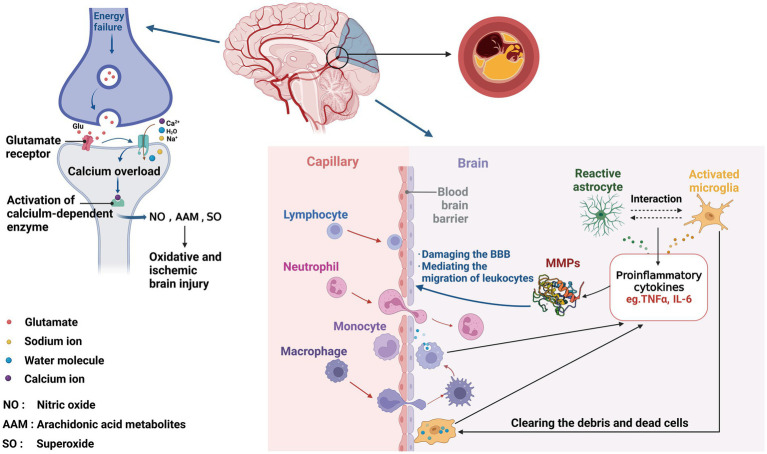Figure 1.
Involvement of biomarkers in ischemic stroke pathophysiology. After ischemic events, neurons suffer from energy failure, inducing the dysfunction of ion channels, leading to the release of glutamate, then increasing intracellular calcium, sodium, and water influx. Following calcium overload, calcium-dependent enzymes are activated, which results in the formation of NO, AAM, and SO, ultimately leading to oxidative and ischemic brain injury. Within the neurovascular unit, microglia get the activated response immediately after IS, with releasing proinflammatory cytokines (TNFɑ, IL-6, and MMP), simultaneously promoting astrocyte activation. Reversely, reactive astrocytes activate microglia, likewise secreting various factors, which damage the BBB, then inducing the migration of peripheral immune cells, leading to secondary BBB damage.

